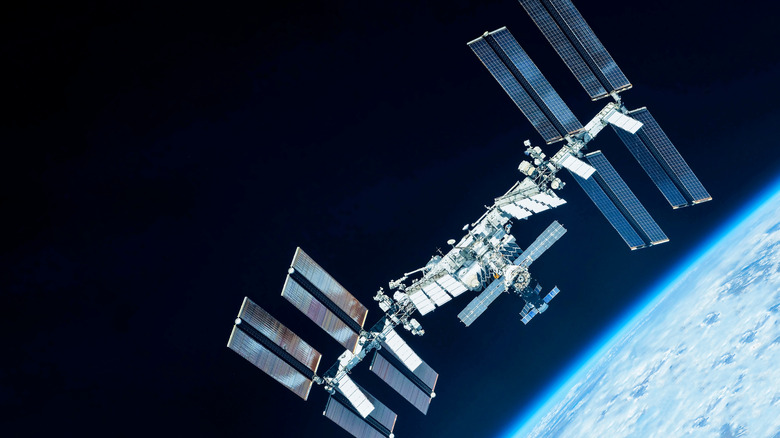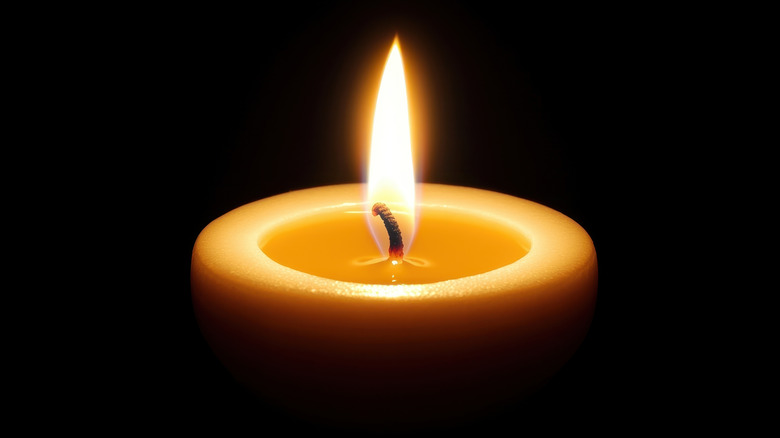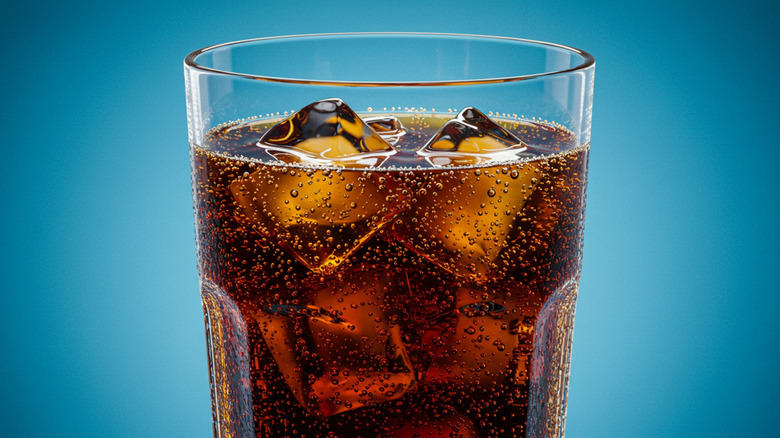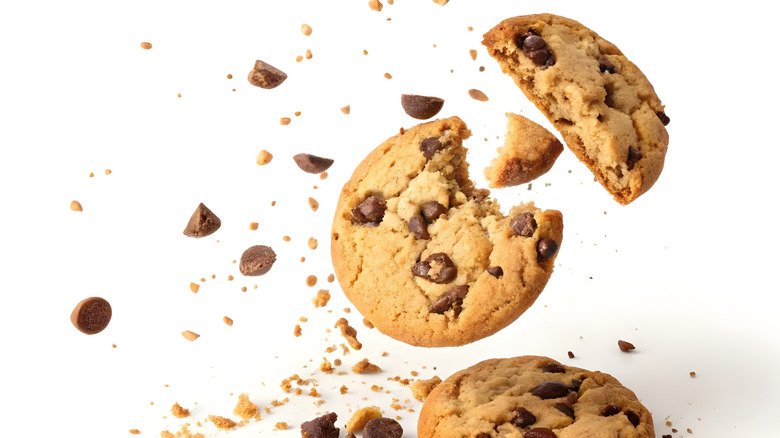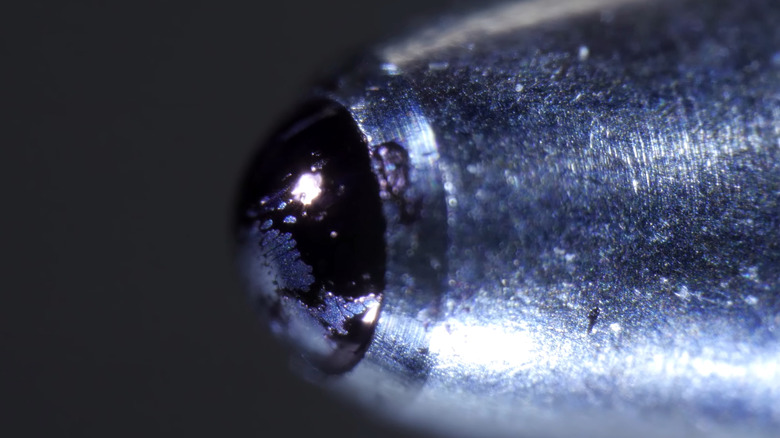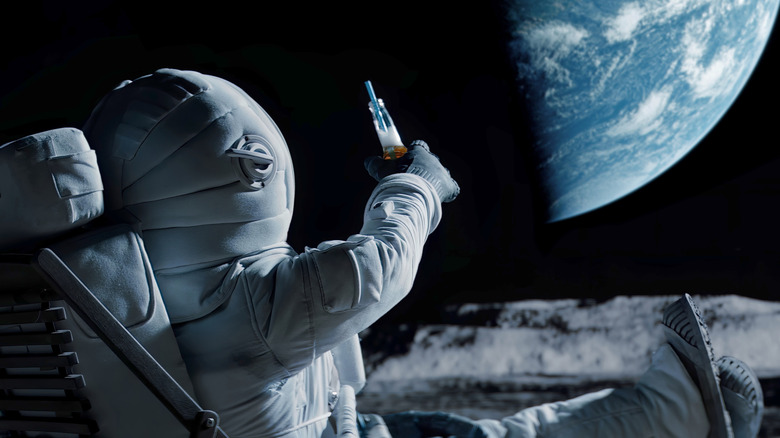5 Items Banned On The International Space Station
Life aboard the International Space Station (ISS) might seem adventurous, but in many ways, it is shaped by the absence of ordinary things we take for granted on Earth. The station is a sealed, weightless environment where a floating breadcrumb, a wisp of perfume, or a flickering candle can quickly become a hazard. For this reason, astronauts must live with a long list of restrictions on what they can bring or use. Items that might seem harmless in a living room or kitchen could clog the ventilation system, contaminate the air supply, or even spark a fire when suspended in microgravity.
Yet, spacefarers don't simply go without. Engineers and scientists have designed clever substitutes to meet the same needs in space-safe ways. Bread is replaced by tortillas to avoid crumbs, ballpoint pens are swapped for specially designed space pens, and cleaning sprays give way to wipes. Even comfort items, such as scented candles, are banned. Instead, astronauts use digital screens that play flickering fire for comfort, or they simply bring photos that bring them comfort and relaxation. These adjustments are not just about survival. They show how humans can adapt in creative ways and are capable of living hundreds of kilometers above Earth, in a place where there's no such thing as "ordinary."
Candles, matches, lighters, and any open flame
Among the most obvious activities banned aboard the ISS are ones that involve the production and sustaining of an open flame. Think matches, lighters, candles, and incense sticks. And though astronauts have run controlled tests involving fire on the ISS, "controlled" is the important part of that statement. In fact, there's been a lot of thought put into safety and the relative flammability of items on board the space station, and that's for good reason. On Earth, a small flame is controlled by gravity. Hot air rises, cooler air sinks, and the flame dances neatly above the wick. In orbit, that natural convection doesn't exist. Flames behave very differently and can form floating spheres of fire that burn less efficiently, and for a much longer time. What might be cozy in a living room becomes a potential source of toxic smoke and a serious threat to the station's delicate life-support systems.
The risk doesn't stop here. Fire suppression in space is more complicated than on Earth. Crews can't simply open a window to clear the air or call for help from the fire department. A single uncontrolled flame could compromise oxygen levels or damage sensitive electronics, which are essential for survival. Even the fumes from a freshly struck match could linger in the recycled atmosphere long after it has burned out. Instead of flames, astronauts use safe alternatives such as LED lights, digital displays, or photographs to create a sense of comfort. After all, taking care of the mental health of astronauts is incredibly important.
Carbonated drinks
Soda, sparkling water, and even a celebratory beer are strictly forbidden aboard the International Space Station. The main problem isn't the sugar, the caffeine, or the alcohol. It's the bubbles. On Earth, carbonation works because gravity pulls liquid downward while lighter carbon dioxide rises upward, creating that satisfying fizz. In microgravity, no such separation occurs. Gas and liquid remain mixed, forming a foamy mess that refuses to settle.
For astronauts, this makes drinking carbonated beverages not just unpleasant but physically uncomfortable. Without gravity, gas doesn't rise out of the stomach as a burp. It mixes with liquids inside the digestive system, leading to what astronauts call "wet burps." It's when air and liquid rise together. Beyond the discomfort, floating foam could escape into the cabin, coating equipment, and creating hygiene issues aboard the ISS.
Engineers have experimented with ways to make fizzy drinks space-safe. Coca-Cola and Pepsi even tested prototypes in the 1980s, but all the results were disappointing. In the end, the scientists decided that the risks outweigh the rewards. Instead, astronauts rely on carefully packaged still beverages such as fruit juices, coffee, tea, and rehydrated drinks sealed in pouches with straws. The absence of fizz is a small price to pay for comfort and safety in orbit.
Bread and cookies
Few foods feel as comforting as fresh bread or a plate of cookies. But on the International Space Station, they're among the most impractical and dangerous things to eat in space. The problem is with the crumbs. On Earth, gravity pulls the crumbs to the ground or onto a plate. In orbit, those same crumbs float freely, drifting into ventilation systems, sticking to surfaces and inside equipment, or finding their way into the crew's nose and eyes. What might be a minor annoyance in a kitchen that's easy to clean becomes a genuine hazard in a spacecraft where even the smallest particle can create a problem.
NASA learned this lesson early. During the 1965 Gemini 3 mission, astronaut John Young smuggled a corned beef sandwich into space. Within seconds, crumbs were floating through the cabin; though the astronauts on board didn't give especially worried responses, it did eventually prompt concerns about equipment damage and contamination. Since then, bread and other crumbly foods like cookies and crackers have been firmly off the menu. Instead, tortilla became a go-to replacement. They produce no crumbs, can be stored for long periods without spoiling, and work perfectly for sandwiches or wraps. It's a simple solution, but one that can make a difference between life and death in space.
Ballpoint pens
At first glance, banning something as harmless as a ballpoint pen might seem excessive. Yet in the weightless environment of the ISS, even simple tools must be reconsidered. Traditional ballpoint pens rely on gravity to pull ink toward the tip. In microgravity, the ink doesn't flow as intended. The ballpoint pen is unreliable in space. Worse, leaking ink or tiny broken parts could easily float away, smearing instruments or contaminating air filters.
Early astronauts often used pencils as a workaround, but those, too, presented a hazard. Graphite tips snapped easily, releasing sharp, conductive fragments that can interfere with electronics or drift into an astronaut's eye. The wood in the traditional pencils was also considered a fire risk. That's why scientists made specially designed "space pens." They're developed with pressurized ink cartridges that work in any orientation, and even underwater. These pens became a staple of space missions, offering a safe, reliable way to write logs, take notes, and sketch diagrams. Now, astronauts can use digital tablets and onboard computers more, reducing their reliance on traditional writing tools altogether.
Alcohol
Alcohol in almost any form is banned from the International Space Station. Whether as a drink, a bottle of cologne, or even a strong hand sanitizer, alcohol is strictly controlled in orbit. The main reason is fire safety. Ethanol, the active ingredient in alcoholic beverages and many hygiene products, is both highly flammable and very volatile. In the sealed, oxygen-rich environment of the ISS, even small vapors pose a risk. But the risks go beyond the flames. The station's air is constantly recycled, and alcohol vapors can linger for days, irritating the eyes, lungs, and skin of the astronauts. Sensitive onboard equipment is also vulnerable to contamination. For this reason, astronauts weren't even allowed to drink a shipment of wine sent up to them. Even personal items such as perfumes, aftershaves, and certain cleaning products are carefully screened before the launch.
That doesn't mean astronauts live without disinfectants or comfort. Special wipes are used for hygiene which contain isopropyl alcohol (different than the ethanol in booze). However, the Russian segment of the ISS permits small amounts of ethanol in controlled medical supplies. Instead of drinking alcohol, the astronauts turn to music, movies, or video calls with their loved ones for relaxation and celebratory moments. Life in orbit simply demands safer substitutes for habits that are common on Earth.
